2024.05.02, rewritten from Classical Inquiries 2021.08.23 | By Gregory Nagy
§0. In the medieval textual tradition recording the songs of a troubadour named Jaufré Rudel, who dates back to the 12th century CE, we read references in his Song 5 to ‘a distant love’, un amor de loing, experienced by the poet in the melancholy role of being in love—hopelessly but joyously—with an unidentified lady who is unattainable, beyond reach. Such an unreachable love, as we read in his Song 2, is ‘a love from a distant land’, amors de terra lonhdana. In a medieval text dating from a later period, the ‘distant love’ of the troubadour is explained in terms of a love story about the life and times of Jaufré Rudel himself in the role of the distant lover, who, as we will see, literally dies for love. But this death of the lover is a happy ending of sorts, since the story pictures the troubadour in a moment of rapture as he dies in the arms of his lady love. She had been unattainable in life but is now embracing him at the moment of his death. In the cover illustration for my essay here, I show a medieval illumination accompanying the relevant text and picturing the same story.
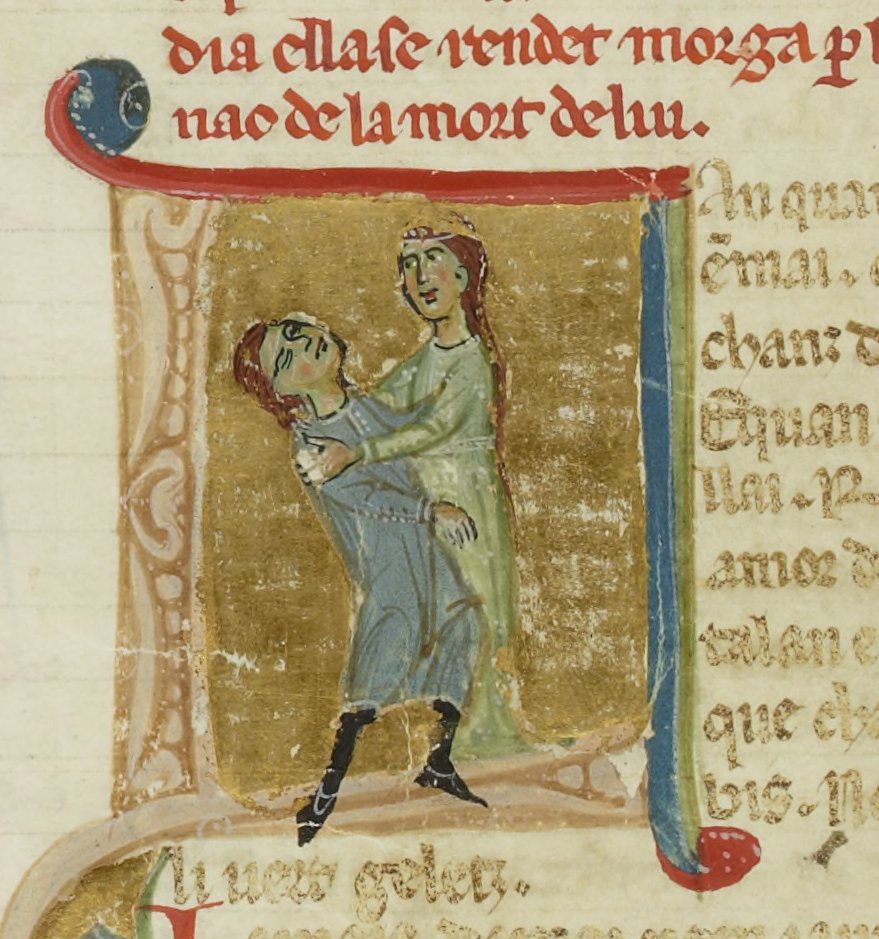
§1. The story itself is preserved in not one but several medieval texts that cannot be traced back to a single archetype. I show here only one major version, which follows manuscripts “I” and “K” as distinct from manuscripts “A” and “B” (Boutière and Cluzel 1964:16–19):
Jaufres Rudels de Blaia si fo mout gentils hom, princes de Blaia. Et enamoret se de la comtessa de Tripol, ses vezer, per lo ben qu’el n’auzi dire als pelerins que venguen d’Antiocha. E fez de leis mains vers ab bons sons, ab paubres motz. E per voluntat de leis vezer, et se croset e se mes en mar, e pres lo malautia en la nau, e fo condug a Tripol, en un alberc, per mort. E fo fait saber a la comtessa et ella venc ad el, al son leit e pres lo antre sos bratz. E saup qu’ella era la comtessa, e mantenent recobret l’auzir e·l flairar, e lauzet Dieu, que l’avia la vida sostenguda tro qu’el l’agues vista; et enaissi el mori entre sos bratz. Et ella lo fez a gran honor sepellir en la maison del Temple; e pois, en aquel dia, ella se rendet morga, per la dolor qu’ella n’ac de la mort de lui.
Jaufré Rudel, of Blaye, was a very noble man, prince of Blaye. He fell in love with the Countess of Tripoli, without ever having seen her, because of the good things he heard being said about her by pilgrims who came from Antioch. And he made about her many verses with good melodies but with weak wordings. And because he longed to see her, he took up the cross [= joined the Crusades] and set out to sail the seas. He fell ill in the ship and was taken to Tripoli, to an inn, near dead. The Countess was notified about him, and she came to him—came right up to his bed, and took him in her arms. He recognized that it was the countess, and, instantly, he recovered his sense of hearing and his sense of smell [for smelling her perfume], and he praised God for keeping him alive long enough for him to have the power of vision to see her. That is how he died, enfolded in her arms. She had him buried in the house of the Temple, honoring him greatly. Then she became a nun, that same day, because of the sorrow she felt over his death.
§2. The text of this story, together with the illumination that we saw further above, is saying in a different way what the text that records the actual songs of the troubadour is saying about his ‘distant love’. We see here differences in genre.
§2.1. In the case of the songs composed by Jaufré Rudel, the first-person ‘I’ of the composer may simply take the role of the person who is singing or, alternatively, some role that fits not so much the historical person but rather, say, the generic persona of a melancholy lover. Either way, the composer is technically the troubadour—or, to write this French version of the word in the native language of Jaufré Rudel, he is the trobador. In previous publications (as, for example, in Nagy 2016.11.03), I refer to the poetic language of the troubadours as “Provençal,” but others prefer a more general term like “Occitan”—or, to say it more simply in French, langue d’oc. In this poetic language, I should add, there exists a separate word for ‘performer’, which is joglar, matching the word for ‘composer’, which as we have seen is trobador. Just as I use the French version for trobador, which is troubadour, for joglar I will hereafter write simply jongleur.
§2.2. Pursuing the point I made about differences in genre, I now turn to the case of the story about our melancholy poet, as I quoted and translated it above. Here the first-person ‘I’ of the composer has been converted into a third-person ‘he’, and a casual reader may be tempted, at first sight, to interpret this ‘he’ as the historical figure identified as Jaufré Rudel, whose life and times can be dated to the twelfth century CE. Here too, however, as in the case of the songs composed by Jaufré Rudel, we need to reckon with questions of genre. In this case, the form of the story that tells in prose about the death of the poet in love is known as a vida or ‘life’ in Provençal poetic language. The vida, as the ‘life story’ of a given troubadour, has been aptly described as a prose “prelude” that was recited by a jongleur who would then proceed, after the recitation, to sing the composition of the given troubadour (Boutière and Schutz 1950:xii–xiii; Boutière and Cluzel 1964:viii). This description of the vida applies also to a related Provençal prosaic genre, the razo (from Latin ratio), which was the equivalent of a ‘commentary’.
§3. In such performances, by jongleurs, the actual songs composed by troubadours in some earlier era could be brought back to life again. After a prosaic retelling of the life and times of a given troubadour, with or without further commentary, the jongleur would proceed to sing the songs of the troubadour.
§4. All this is not to say, however, that “troubadours in some earlier era,” as I have just now referred to poets like Jaufré Rudel, cannot be seen as potential jongleurs in their own right. The troubadours whose songs were performed and occasionally even explicated by jongleurs in a later era could themselves have performed as jongleurs in their own “earlier” era. Like any jongleur in a later era, the troubadour himself could perform his own compositions. He too, like a jongleur, could be accompanying himself on a string instrument, and the singing could even make room for dancing, as we see in the illumination that I show below, where ladies are seen dancing to the song of a troubadour—and, potentially, they would be singing along with the troubadour.
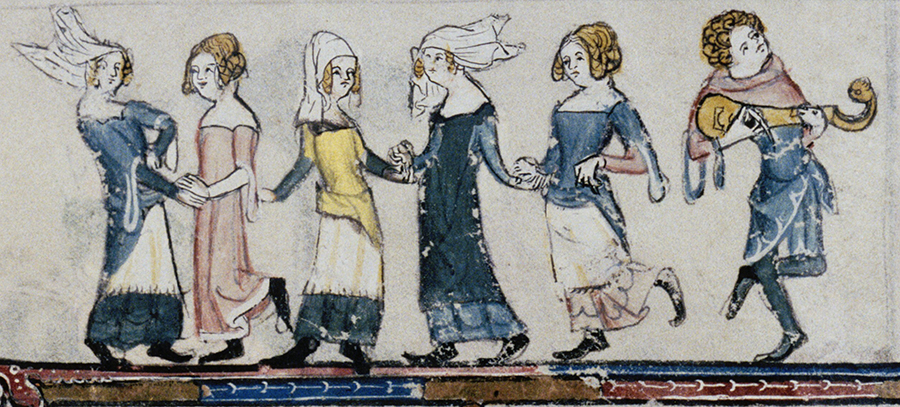
§5. The observations I have made here about troubadours and jongleurs stem from a note I once wrote in the book Pindar’s Homer: The Lyric Possession of an Epic Past (Nagy 1990:80n40, 2§50) in the context of analyzing various constructs of authorship as found in ancient Greek poetic traditions (pp. 79–80, 2§§50–51). In my analysis, I was comparing such constructs with parallels to be found in other poetic traditions—parallels that are only typological, that is, not historically related to each other. And among the parallels I highlighted was the Provençal custom, as just described, where a jongleur would recite a vida or a razo about a given troubadour before proceeding to sing a song composed by that troubadour (again, 2§50n40). I now epitomize the relevant aspects of what I formulated in the course of my typological comparisons (again, pp. 79–80, 2§§50–51):
The appropriation of a historical person by the poetic tradition in which that person is composing can be visualized in the following general schema of progressive phases, constructed from specific examples of performance conventions taken from a variety of mutually unrelated traditional societies (bibliography for the examples is provided in the footnotes for pp. 79–80, 2§§50–51):
1) At a phase of a given tradition where each performance still entails an act of at least partial recomposition, performer “L” publicly appropriates a given recomposition-in-performance as his or her own composition.
2) At a later phase of the tradition, performer “M” stops appropriating the recomposition of the recomposition as his or her own composition and instead attributes it to the predecessor “L”; this attribution is then continued by successors “N” and “O” and “P” and “Q” and so on.
3) In the process of successive recompositions by “NOPQ…,” the self-identification of “L” is recomposed often enough to eliminate the historical aspects of identity and to preserve only the generic aspects (that is, the aspects of the poet as defined by traditional activity as a poet; also by being the predecessor of those who continue in the tradition).
§6. The key to loss of identity as a composer is loss of control over performance. Once the factor of performance slips out of the poet’s control—even if the performers of the poet’s poetry have traditional comments about the poet as a composer—the poet becomes a myth; more accurately the poet becomes part of a myth, and the myth-making structure appropriates his or her identity.
§7. And the myth can continue to be recomposed, seemingly without end. In the case of the mysterious ‘countess of Tripoli’, my own personal favorite example of recomposition is the role of Sarah Bernhardt in the play of Edmond Rostand, La princesse lointaine (1895).
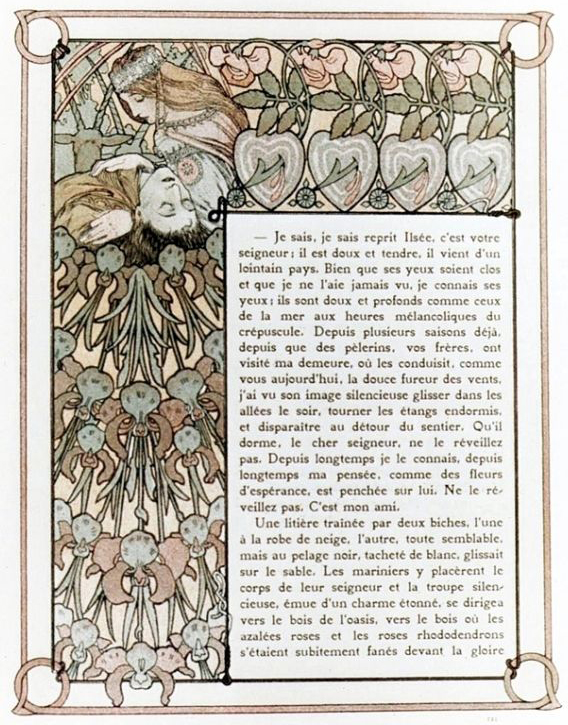
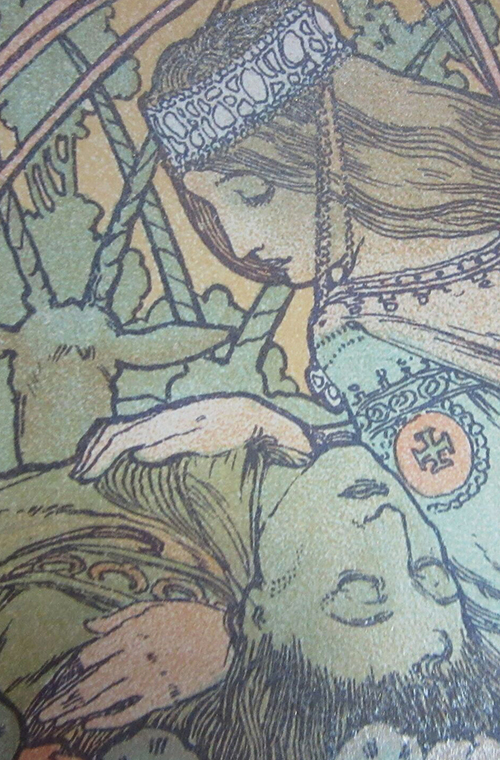
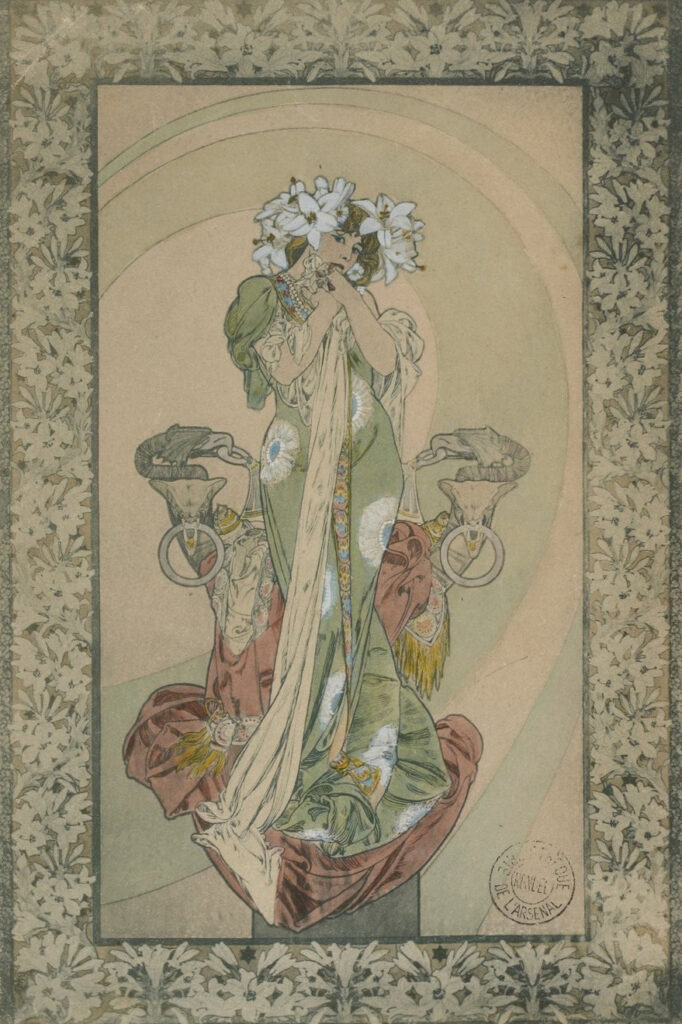
Bibliography
Boutière, J., and A.-H. Schutz. 1950. 2nd ed., without Schutz and now, instead, with I.-M. Cluzel, 1964. Biographies des Troubadours: Textes provençaux des xiiie et xive siècles. Toulouse/Paris.
Finnegan, R. 1970. Oral Literature in Africa. Oxford.
Finnegan, R. 1977. Oral Poetry: Its Nature, Significance, and Social Context. Cambridge.
Lord, A. B. 1960 (/2000/2019). The Singer of Tales. Harvard Studies in Comparative Literature 24. Cambridge MA. 2nd ed. 2000, with new Introduction, by S. A. Mitchell and G. Nagy. http://nrs.harvard.edu/urn-3:hul.ebook:CHS_LordA.The_Singer_of_Tales.2000. 3rd edition by D. F. Elmer, 2019. Hellenic Studies Series 77, Publications of the Milman Parry Collection of Oral Literature 4.
Nagy, G. 1990. Pindar’s Homer: The Lyric Possession of an Epic Past. Baltimore. http://nrs.harvard.edu/urn-3:hul.ebook:CHS_Nagy.Pindars_Homer.1990.
Nagy, G. 1996a. Poetry as Performance: Homer and Beyond. Cambridge. http://nrs.harvard.edu/urn-3:hul.ebook:CHS_Nagy.Poetry_as_Performance.1996.
Nagy, G. 1996b. Homeric Questions. Austin. http://nrs.harvard.edu/urn-3:hul.ebook:CHS_Nagy.Homeric_Questions.1996.
Nagy, G. 2009. “Hesiod and the Ancient Biographical Traditions.” The Brill Companion to Hesiod, ed. F. Montanari, A. Rengakos, and Ch. Tsagalis, 271–311. Leiden. http://nrs.harvard.edu/urn-3:hlnc.essay:Nagy.Hesiod_and_the_Ancient_Biographical_Traditions.2009.
Nagy, G. 2009|2008. Printed | Online version. Homer the Classic. Hellenic Studies 36. Cambridge, MA and Washington, DC. http://nrs.harvard.edu/urn-3:hul.ebook:CHS_Nagy.Homer_the_Classic.2008.
Nagy, G. 2010. “Homer Multitext project.” Online Humanities Scholarship: The Shape of Things to Come, ed. J. McGann, with A. Stauffer, D. Wheeles, and M. Pickard, 87-112. Rice University Press (ceased operations in 2010). Online version of the article is available at http://nrs.harvard.edu/urn-3:hlnc.essay:Nagy.The_Homer_Multitext_Project.2010.
Nagy, G. 2010|2009. Printed | Online version. Homer the Preclassic. Berkeley and Los Angeles. http://nrs.harvard.edu/urn-3:hul.ebook:CHS_Nagy.Homer_the_Preclassic.2009.
Nagy, G. 2011a. “Diachrony and the Case of Aesop.” Classics@9: Defense Mechanisms in Interdisciplinary Approaches to Classical Studies and Beyond. http://nrs.harvard.edu/urn-3:hlnc.essay:Nagy.Diachrony_and_the_Case_of_Aesop.2011.
Nagy, G. 2011b. “The Aeolic Component of Homeric Diction.” Proceedings of the 22nd Annual UCLA Indo-European Conference, ed. S. W. Jamison, H. C. Melchert, and B. Vine, 133–179. Bremen. In Nagy 2012 v1. http://nrs.harvard.edu/urn-3:hlnc.essay:Nagy.The_Aeolic_Component_of_Homeric_Diction.2011.
Nagy, G. 2013. The Ancient Greek Hero in 24 Hours. Cambridge, MA. http://nrs.harvard.edu/urn-3:hul.ebook:CHS_NagyG.The_Ancient_Greek_Hero_in_24_Hours.2013.
Nagy, G. 2016| 2015. Masterpieces of Metonymy: From Ancient Greek Times to Now. Hellenic Studies 72. Cambridge, MA and Washington, DC. http://nrs.harvard.edu/urn-3:hul.ebook:CHS_Nagy.Masterpieces_of_Metonymy.2015.
Nagy, G. 2016.11.03. “Some jottings on the pronouncements of the Delphic Oracle.” Classical Inquiries. https://classical-inquiries.chs.harvard.edu/some-jottings-on-the-pronouncements-of-the-delphic-oracle/.
PP. See Nagy 1996a.
PH. See Nagy 1990.
Pickens, R. T. 1977. “Jaufre Rudel et la poétique de la mouvance.” Cahiers de Civilisation Médiévale 20:323–337.
Pickens, R. T, ed. 1978. The Songs of Jaufré Rudel. Toronto.
Pickens, R. T. 1978b. “La Poétique de Marie de France d’après les Prologues des Lais.” Les Lettres Romanes 32:367–384.
Pickens, R. T. 1994. “‘Old’ Philology and the Crisis of the ‘New’.” In The Future of the Middle Ages: Medieval Literature in the 1990s, ed. W. D. Paden, 53–86. Gainesville, FL.
Zumthor, P. 1972. Essai de poétique médiévale. Paris.
Zumthor, P. 1983. Introduction à la poésie orale. Paris.
Zumthor, P. 1984. La Poésie de la Voix dans la civilisation médiévale. Paris.
Zumthor, P. 1987. La Lettre et la voix: De la “littérature” médiévale. Paris.